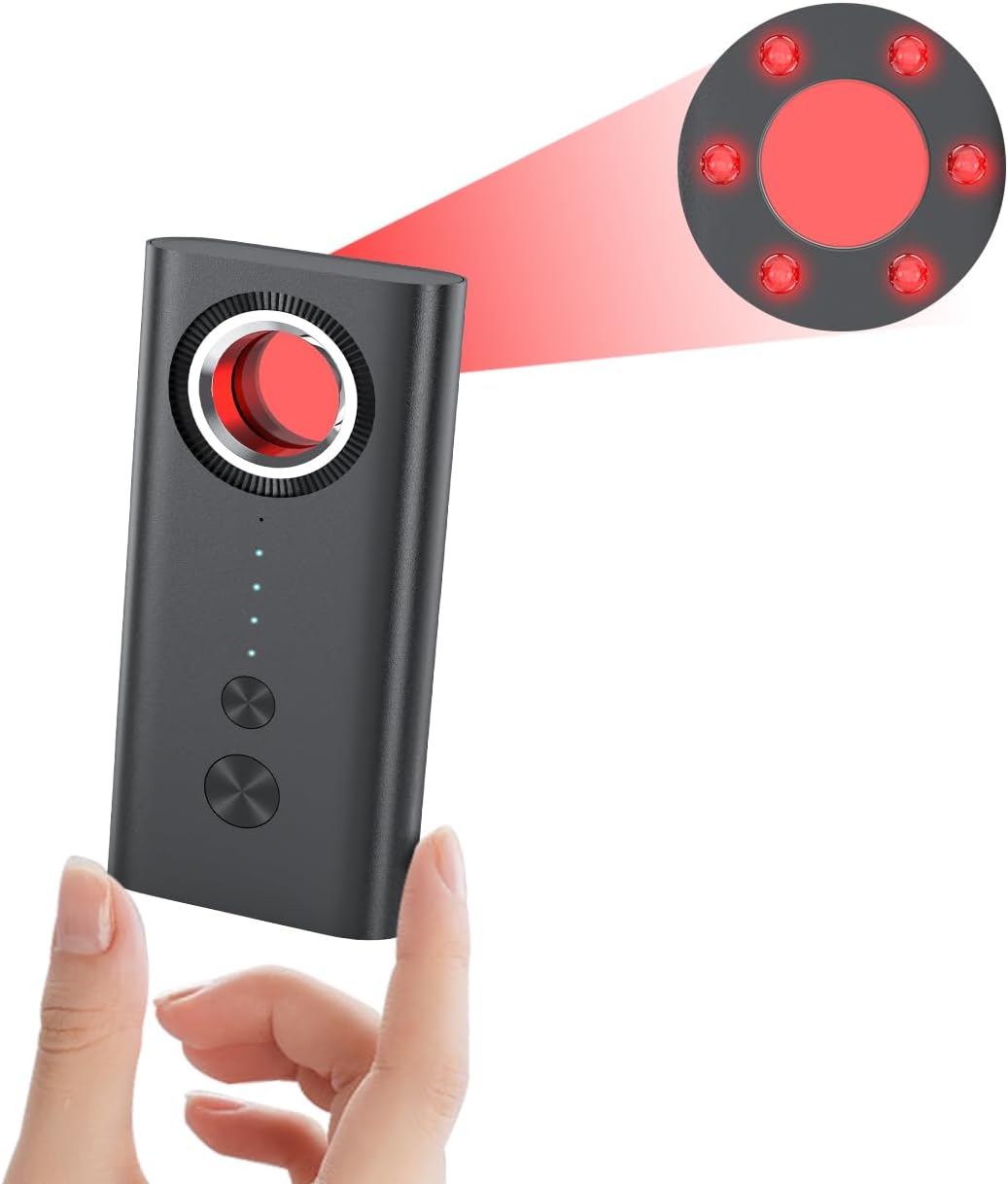Worried about hidden cameras invading your privacy? You’re not alone. In an increasingly interconnected world, the threat of surveillance without consent is a real concern. Thankfully, technology has provided a solution: anti-spy detectors. These devices can help you identify hidden cameras and listening devices, giving you peace of mind and safeguarding your privacy. This comprehensive guide delves into how these detectors work, their different types, and what to look for when choosing one to protect yourself.
Understanding the Technology Behind Anti-Spy Detectors

Anti-spy detectors use a variety of technologies to locate hidden cameras and microphones. The most common methods include:
- RF Detection: Many hidden cameras transmit wirelessly using radio frequencies (RF). RF detectors scan for these transmissions, alerting you to the presence of a potential spy device. These detectors are especially useful for identifying cameras that transmit video or audio data over Wi-Fi or other wireless networks.
- Lens Detection: Some detectors use infrared (IR) light to locate the lenses of hidden cameras. Cameras often have lenses that reflect IR light differently than the surrounding environment. The detector will signal when it senses this reflection, pinpointing the location of the camera.
- Magnetic Detection: This method detects the magnetic fields emitted by some electronic devices, including certain types of cameras. While not all cameras emit strong enough magnetic fields to be detected, it can still be a helpful tool in certain situations.
- Laser Detection: High-end detectors sometimes employ laser technology to scan for reflective surfaces, which can indicate the presence of a camera lens. This method is highly accurate but can be more complex and expensive.
It’s important to understand that no single detector is perfect. Some hidden cameras are designed to be incredibly difficult to detect, using sophisticated techniques to minimize their RF emissions or employing covert designs that don’t reflect IR light effectively. Using a detector with multiple detection methods is often the most effective approach.
Types of Anti-Spy Detectors and Their Features

Anti-spy detectors come in various forms, each with its own strengths and weaknesses:
- Handheld Detectors: These are portable and easy to use, perfect for quickly scanning a room or area. They’re often more affordable but might have a shorter detection range than other types.
- Professional-Grade Detectors: These devices are more sophisticated and often offer a wider range of detection methods, including laser detection and more sensitive RF scanning. They are typically more expensive but provide greater accuracy and reliability.
- Software-Based Detectors: Some software applications for smartphones and computers claim to detect hidden cameras. While these can be convenient, their effectiveness is often questionable, and they may require significant processing power and battery life.
When choosing a detector, consider the following:
- Detection Methods: Look for a device that utilizes multiple detection methods for greater accuracy.
- Detection Range: The range determines how far away the detector can identify a hidden camera. Consider the size of the area you need to scan.
- Ease of Use: The detector should be intuitive and easy to operate, even for someone without technical expertise.
- Battery Life: A long battery life is essential, especially for larger scans.
- Price: Prices vary significantly, depending on the features and technology involved.
Effective Strategies for Using Anti-Spy Detectors

To maximize your chances of detecting hidden cameras, follow these steps:
- Systematic Scan: Slowly and methodically scan the area, paying close attention to common hiding spots like clocks, smoke detectors, electrical outlets, and picture frames.
- Vary Your Scan Height: Hidden cameras can be placed at various heights, so scan both high and low areas.
- Check Multiple Locations: Don’t focus on just one area. Thoroughly examine all potential locations where a camera could be hidden.
- Understand False Positives: Detectors can sometimes give false positives due to other electronic devices. If you get a signal, double-check the location carefully.
- Use Multiple Detection Methods: If possible, use a detector with multiple detection methods to confirm any potential findings.
Comparing Anti-Spy Detectors: A Quick Overview

The market offers a plethora of anti-spy detectors, each with its own set of capabilities and pricing. While a detailed comparison would be extensive, consider researching popular brands and models before purchasing. Read reviews from other users and compare specifications to find a detector that meets your specific needs and budget. Focus on the detection methods employed, the range of detection, and the overall user experience reported by other consumers.
Conclusion: Protecting Your Privacy
The use of anti-spy detectors is a proactive measure to safeguard your privacy in a world increasingly saturated with technology. While no device offers foolproof detection, a high-quality anti-spy detector, combined with careful observation and a systematic approach, can significantly reduce the risk of undetected surveillance. Remember to research thoroughly, choose a reputable brand, and understand the limitations of the technology to best protect your personal space and security.


